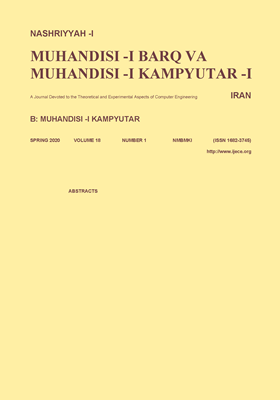-
-
List of Articles
-
Open Access Article
1 - A Load Balancing Scheme by D2D-Based Relay Communications in Heterogeneous Networks Signals
shahriar gholami mehrabadi yasser attar izi soroush akhlaghi -
Open Access Article
2 - Human Activity Recognition using Switching Structure Model
Mohammad Mahdi Arzani M. Fathy Ahmad Akbari -
Open Access Article
3 - Analyzing the Effect of Heterogeneous Cache Hierarchy in Data Center Processors
Adnan Nasri M. Fathy Ali Broumandnia -
Open Access Article
4 - Improving Security of LSBM Steganography Using of Genetic Algorithm, Mmulti-Key and Blocking
vajiheh sabeti Sepide faiazi hadise shirinkhah -
Open Access Article
5 - A New and Robust AMP Algorithm for Non IID Matrices Based on Bayesian Theory in Compressed Sensing
F. Ansari Ram M. Khademi Abbas Ebrahimi moghadam H. Sadoghi Yazdi -
Open Access Article
6 - A Distributed Method for Extracting Persian-English Chunks
Seyedeh Sara Mirmobin Mohammad Ghasemzadeh Amin Nezarat -
Open Access Article
7 - A Dynamic Sequential Approach Using Deep Learning to Improve the Performance of Biometrics Match on Card Systems
Mohammad Sabri Mohammad Moin Farbod Razzazi -
Open Access Article
8 - Convolutional Neural Networks for Sentiment Analysis in Persian Social Media
M. Rohanian M. Salehi A. Darzi وحید رنجبر
-
The rights to this website are owned by the Raimag Press Management System.
Copyright © 2017-2025







